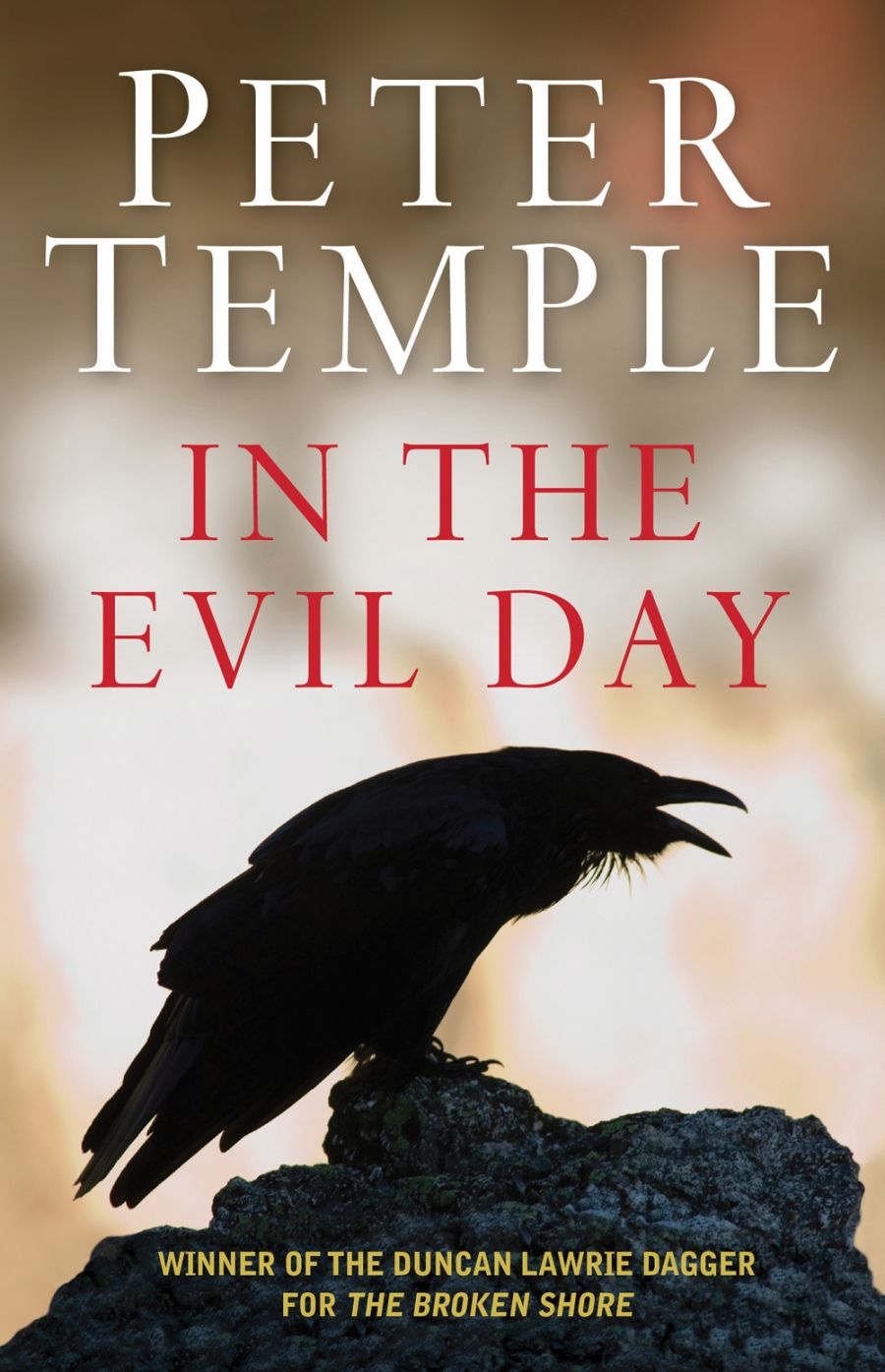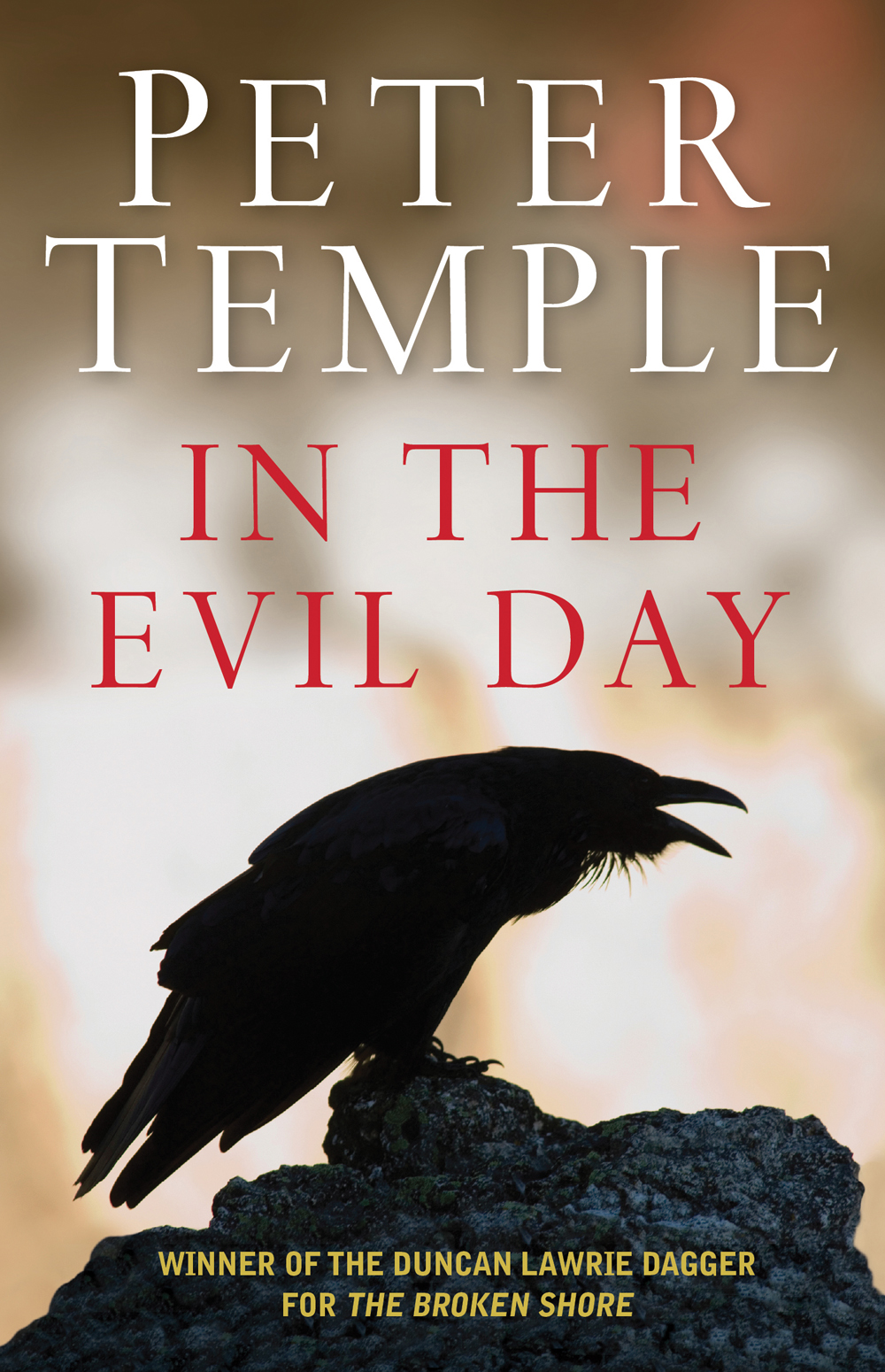
- Free Article: No
- Contents Category: Fiction
- Custom Article Title: It's about killing people
- Review Article: Yes
- Article Title: It's about killing people
- Online Only: No
- Custom Highlight Text:
Oscar Wilde’s Lady Bracknell famously deplores Ernest’s loss of not one but both parents. The great polymath would approve of Peter Temple’s easy mastery of not just two but three popular literary genres. In the Jack Irish series, Temple created a likeable rogue who approximates a Melbourne private eye, and with The Broken Shore (2005) he won crime writing awards for a disciplined police procedural set in rural Victoria. In the Evil Day is an international thriller that moves mainly between Hamburg and London. Again, Temple’s control is strong and deft.
- Book 1 Title: In the Evil Day
- Book 1 Biblio: Text, $22.95 pb, 345 pp
- Book 1 Cover Small (400 x 600):

- Book 1 Cover (800 x 1200):

Temple’s main characters, Constantine Niemand and John Anselm, inhabit distinct sub-plots until their fates coincide. The opening chapter introduces Niemand as a mercenary soldier turned bodyguard in South Africa. Occurring at the story’s beginning, the violence of this scene initially seems gratuitous, but, as Niemand surveys a room spattered with the blood of five corpses, the telephone rings. The caller wants a videotape that was in the possession of one of the victims, and Niemand, reckoning that he needs new employment, agrees to take it to London, for a price. The decision imperils his life.
Hunted by the people who are threatened by the video-tape’s existence, Niemand tries to sell it to the press. Journalist Caroline Wishart is betrayed by a colleague, the exchange is aborted and Niemand is shot. Jess Thomas, whose brother died in a diabetic fit because no one would assist him, is passing on her motorbike and rescues the wounded Niemand. They grow close and she asks about his experience as a soldier: ‘It’s about killing people, isn’t it?’ Niemand, who thinks that Jess is ‘far, far too good for anyone like him’, admits killing but says, ‘No pleasure in it ... I’m not like that’. He is however, efficient enough at it to survive attacks by squads of well-equipped commandos.
Anselm lives a more complex existence than the fugitive Niemand. Amdselm – a freelance foreign correspondent on assignment in Beirut who was taken hostage and tortured – carries physical and psychological scars, both of which interest academic trauma researcher Dr Alex Koenig. Initially, Anselm resists her approaches and declines an interview, but he relents and finds her attentions sexually therapeutic. Anselm lives in the old family home, but is frustrated by gaps in his knowledge of earlier Anselm generations. Temple has Anselm’s traumatised memory run parallel to family silence about one particular forebear, Moritz.
Anselm works in an organisation that deals in information on an international level. The firm gathers data by various means, many of which amount to theft: eavesdropping, video surveillance, hacking into computer systems, retrieving bank records, bribery, calling in favours, blackmail and impersonating officials. Anselm ‘was grateful that he had something to do, working out how much to charge people he did not know for spying on other people for reasons he did not want to know’. They found missing persons such as the runaway wife, but studiously ignored the likely results of their success.
In international thrillers, the plot is likely to advance in three ways: through intellectual discoveries, chance encounters and violence. The key discoveries of In the Evil Day are made by Anselm, whose research incrementally shows links between the video, a pharmaceutical company and a special operations unit known as SD, whose existence is denied by the American security services. Interestingly, chance is represented mainly by women: Wishart the journalist, Koenig the trauma expert and Thomas the free-spirited builder of architectural models. Anselm’s confidence soars during his affair with Koenig. He overcomes depression and recovers enough idealism to care about the Niemand case. Niemand could not have survived without Jess’s intervention, and her affection for him makes him a much more sympathetic character.
Niemand is a lightning rod for the story’s violence. Most of the violence which he uses is reactive, for his pursuers are desperate to regain the video and destroy anyone who has seen it. Temple evokes the scenes of conflict efficiently with short sentences suggestive of a thumping heart, but plants some firm implications that violence is not the ideal solution to problems at either the personal or international level. While Anselm, Alex and Jess are drawn into the violence around them, they do not seem to be permanently corrupted. In the Evil Day follows the chain of action and reaction in human affairs in such a way that violence is shown to be counter-productive.
Anselm represents the hope of escape from the confines of the past. In confronting his physical and mental trauma, his misgivings about his heritage and the ethics of his occupation, Anselm’s struggle and maturation as a character ensure that the novel leaves a satisfying impression. At a time when individuals can feel threatened by international violence and when governments offer little reassurance, In the Evil Day is a riveting book, hopeful and palliative.


Comments powered by CComment